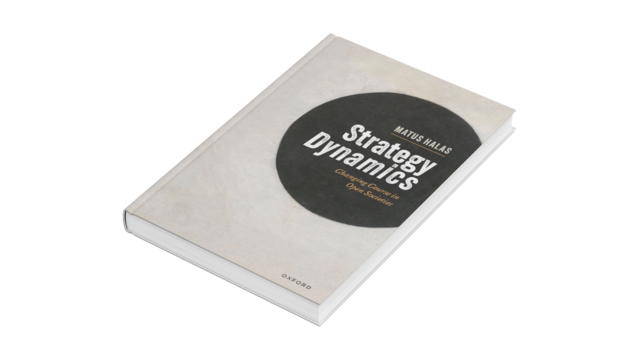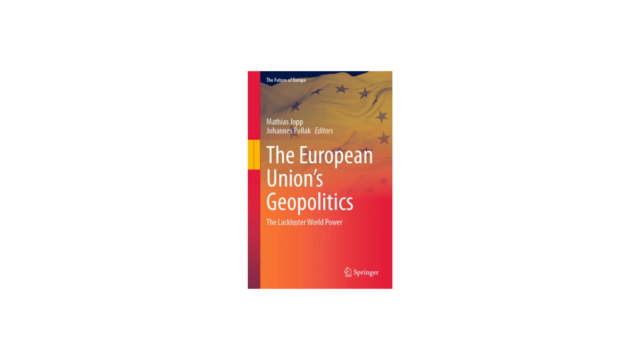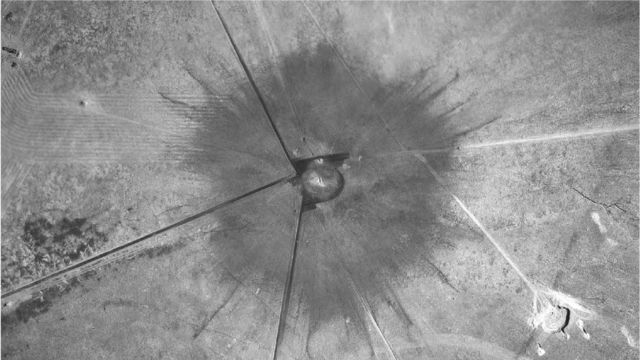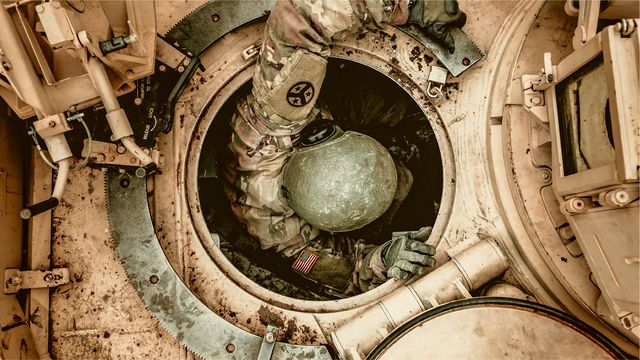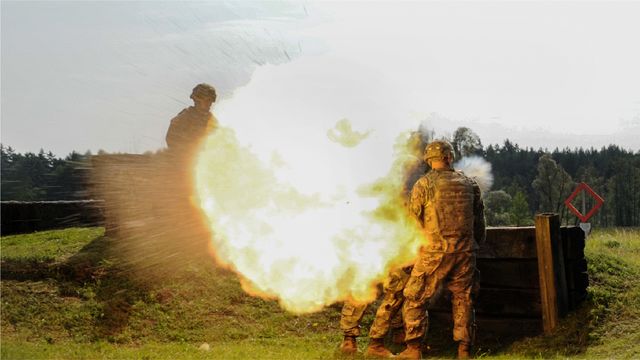Will the Validity of the Last US-Russia Arms-Control Treaty, the New START Treaty, be extended?
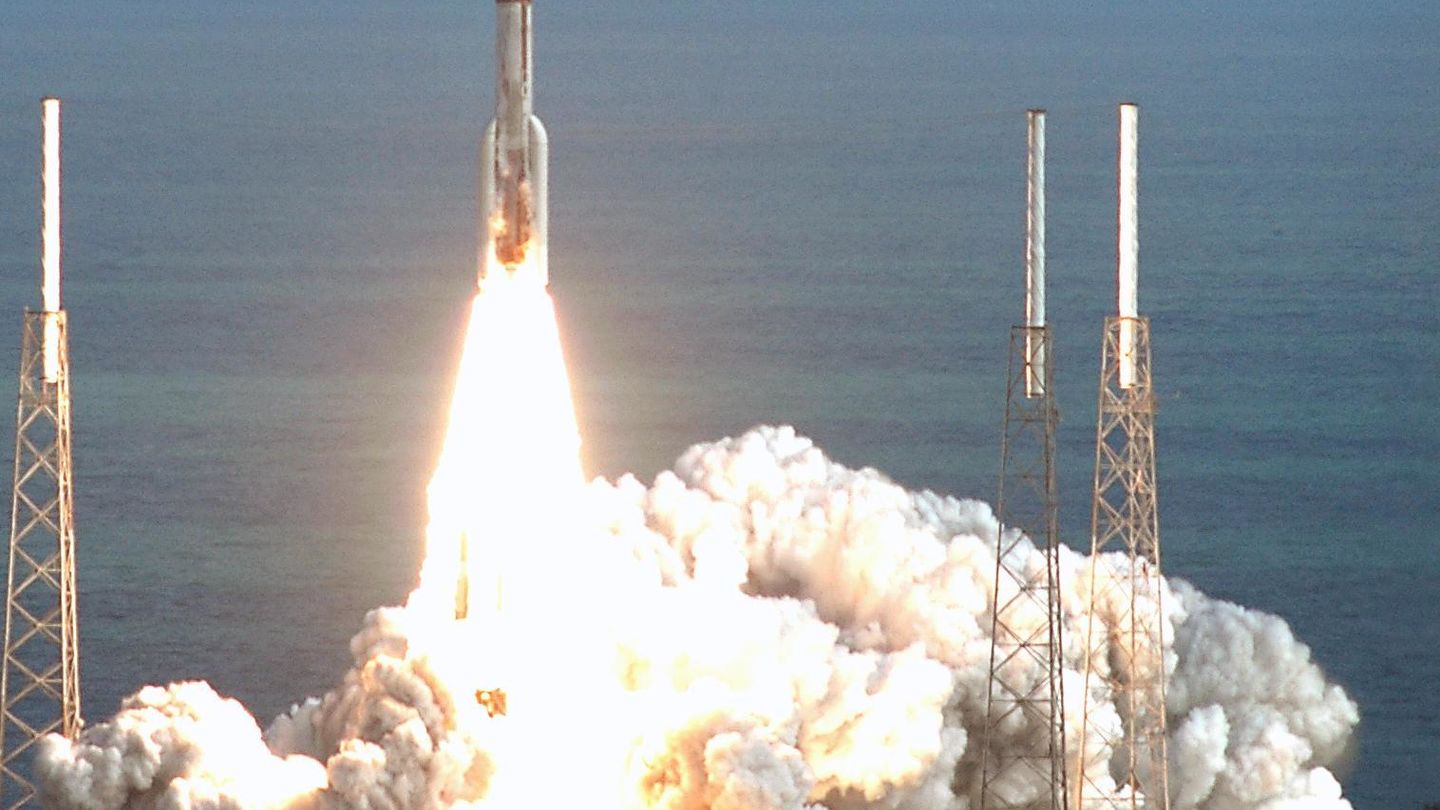
The official title of the New START Treaty is the Treaty between the United States of America and the Russian Federation on Measures for the further Reduction and Limitation of Strategic Offensive Arms. The ten-year validity of the Treaty with expire on February 5, 2021, though there is the possibility of its extension for a further five years. The key question is whether both participating countries will agree with the mentioned extension. If not, more than 90% of the nuclear weapons in their possession (out of the total number of ca. 13,900 weapons) will not be subject to any arms-control limitation for the first time since 1972.
The official title of the New START Treaty is the Treaty between the United States of America and the Russian Federation on Measures for the further Reduction and Limitation of Strategic Offensive Arms. The ten-year validity of the Treaty with expire on February 5, 2021, though there is the possibility of its extension for a further five years. The key question is whether both participating countries will agree with the mentioned extension. If not, more than 90% of the nuclear weapons in their possession (out of the total number of ca. 13,900 weapons) will not be subject to any arms-control limitation for the first time since 1972.
THE CONTINUITY OF THE NEW START TREATY WITH PREVIOUS TREATIES
The New START Treaty served as a substitute for the START I Treaty of 1991, which expired in December 2009. In some areas it even replaced the so-called Moscow Treaty (SORT) of 2002, whose planned expiration in 2012 was cancelled due to the new treatyʼs entry into force.
The START negotiating process dealing with the limits of strategic offensive weapons with a range beyond 5,500 km oficially began in 1982. The Treaty on the Reduction and Limitation of Strategic Offensive Arms (START I) was signed in the context of this process. The Treaty limited both countries, since at the end of its three-phased process in December 2001, they were to operationally deploy 1,600 units of means of delivery and 6,000 units of nuclear warheads.
Due to the dissolution of the Soviet Union in December 25, 1991, and the following creation of the Commonwealth of Independent States (CIS), not only the Russian Federation (the RF) in the role of the successor state of the former Soviet Union, but also Ukraine, Belarus and Kazakhstan joined START I via the signing of the Lisbon Protocol in May 1992. The reason for their joining it was the deployment of strategic nuclear weapons on their territories.
In 1993, the then presidents of the USA and the RF – George H.W. Bush and Boris Yeltsin – signed the START II Treaty with the aim to reduce the number of strategic nuclear warheads in both countries to roughly 3,000–3,500 units by 2007. It primarily prohibited the use of multiple independently targetable reentry vehicles (MIRVs) in connection with landbased intercontinental ballistic missiles (ICBMs). Due to both countriesʼ concerns about security policy (e.g. the RF protests against the allied airstrikes against Yugoslavia and its opposition against the eastward expansion of NATO, and, on the other hand, the U.S. Senateʼs refusal of any action supportive of the then existing ABM Treaty), the ratification process failed and the START II Treaty never entered into force. During Bill Clintonʼs Democratic administration a consensus was achieved with the Russian president Boris Yeltsin about the framework of the then negotiated START III Treaty. It was agreed that the Treaty should limit the deployed strategic nuclear warheads for each side to 2,000–2,500 units by the end of 2007. But further talks about this collapsed and the Treaty was never signed for approximately the same reasons as in the case of the failure of the START II Treaty.
With the creation of George W. Bushʼs Republican administration in January 2001 the START treatiesʼ negotiation process was finished. Nevertheless the bilateral negotiations on the reduction of strategic offensive weapons continued. The U.S. intention to withdraw from the Treaty Between the United States of America and the Union of Soviet Socialist Republics on the Limitation of Anti-Ballistic Missile Systems (the ABM Treaty) and develop a national anti-missile defense was discussed as well, but this was strongly opposed by the RF due to the negative consequences of such steps for the strategic balance. However, the friendly and partner-like American-Russian relations in that period of time culminated in the signature of the Treaty between the United States of America and the Russian Federation on Strategic Offensive Reductions, known as the SORT or the Moscow Treaty, in May 2002. In its Article I each participating state was obliged to reduce its number of strategic nuclear warheads to 1,700–2,200 units by December 31, 2012 (compared to each state having roughly 6,000 units at that time). The Treaty, however, did not include any limitation of the number of launchers. The implementation and verification of SORT were subject to the START I Treaty verification regime, which was valid until December 2009. In the same period both countries also signed the Common Declaration on the new framework of strategic relations, which included, among other things, plans for their cooperation in the fight against terrorism, and the growth of their economic and scientific relations.
THE MAIN FEATURES AND SIGNIFICANCE OF THE NEW START TREATY
The New START Treaty was signed by the then presidents of the US and the Russian Federation (RF) Barack Obama and Dmitry Medvedev in Prague on April 8, 2010. The Treaty is a relatively simple bilateral law instrument of an arms control rather than disarmament character dealing with the limitation of strategic offensive systems, and in this respect, it is similar to previous treaties of the same sort. Under its Article II both participating countries were obliged to fulfill the following limits within a seven-year period: 1,550 units of warheads for deployed Intercontinental Ballistic Missiles (ICBMs), Submarine Launched Ballistic Missiles (SLBMs) and heavy bombers, 700 units of the deployed ICBMs, SLBMs and heavy bombers and 800 units of deployed and non-deployed ICBM launchers, deployed and non-deployed SLBM launchers, and deployed and non-deployed heavy bombers. The Treaty also established the Bilateral Consultative Commission to resolve any ambiguities in this regard.
All three parts of the New START Treaty, namely its main text, the Protocol and its Technical Annexes, are legally binding and as a whole they were presented to the U.S. Senate and the State Duma of the RF in the context of the ratification process. After their approval and following signature by both presidents, and the exchange of the instruments of ratification the Treaty on February 5, 2011, the Treaty started to be valid for a period of ten years with the possibility of its extension for another five years.
The Treatyʼs monitoring and verification regime contains detailed definitions of limited elements, and provisions dealing with the use of national technical means for the purpose of ensuring verification of compliance with the Treaty. It further includes a database identifying numbers, types and locations of elements that are subject to the Treatyʼs limitations, and provisions stipulating that the states will provide notifications about the limited elements and on-site inspections that would enable the state parties to the Treaty to confirm the information gained through the mutual exchange of information. Both countries fulfilled all the limits on time, that is, by February 5, 2018.
THE NEW START TREATY AND THE U.S. MISSILE DEFENSE
The Russian reservations about the building of the U.S. missile defense after the unilateral withdrawal of George W. Bushʼs Republican administration from the ABM Treaty in 2002 were reflected in the text of the Treaty’s preamble, in its Article V and in unilateral statements of the participating countries.
In the preamble of the New START Treaty there is the following wording: “Recognizing the existence of the interrelationship between strategic offensive arms and strategic defensive arms, that this interrelationship will become more important as strategic nuclear arms are reduced, and that current strategic defensive arms do not undermine the viability and effectiveness of the strategic offensive arms of the Parties.” Article V responds to the Russian concerns as regards possible treaty violation – e.g. the US violating it by placing ICBMs in silos that had previously held interceptors of the US missile defense. Thus the wording of Article V prohibits the paricipating states from converting ICBM and SLBM launchers into missile defense interceptors launchers and visa versa. There is, however, an exception for launchers that were converted into missile defense inerceptors launchers prior to the signature of the New START Treaty. (Authorʼs note: According to the US nongovernmental Arms Control Association this was the case for five converted ICBM launchers that are currently kept in underground silos at Vandenberg Air Force Base in California.)
After the New START Treatyʼs signature, as in the case of previous arms-control treaties, both participants presented non-legally-binding unilateral statements that clarified their positions regarding the relationship between the missile defense and the Treaty. The Russian side mainly opposed the qualitative and quantitative development of the missile defense elements, which in its view could lead to a breach of the strategic balance, and referred to the possibility of a state using Article XIV to withdraw from the Treaty. The United States stated that its missile defense systems are not intended to affect the strategic balance between both countries and that their intended purpose is to protect against regional threats and limited missile strikes. The Summary of the Congressional Research Service Report of May 30, 2019 addressed to members and committees of the US Congress stressed, among other things, that the New START Treatyʼs operative part doesnʼt limit current or planned missile defense programs of the United States.
The Summary also states, that the US never intended to carry out the mentioned conversions and has no plans to do so.
THE NEW START TREATY AND CONVENTIONAL STRATEGIC WEAPONS
Conventional strategic weapons are mentioned in the New START Treatyʼs preamble. The relevent text is as follows: “...Mindful of the impact of conventionally armed ICBMs and SLBMs on strategic stability, Taking into account the positive effect on the world situation of the significant, verifiable reduction in nuclear arsenals at the turn of the 21st century…” Both countries are allowed by this wording to install conventional warheads on long range ballistic missiles but in accordance with the Treatyʼs limits this applies to nuclear warheads only.
CONCLUSIONS
Predictability and transparency were missing in the US-Russia relations after the START I Treatyʼs expiration in 2009, and thus their restoration was considered to be the main goal of the New START Treaty. According to Nikolai Sokov, a senior fellow at the James Martin Center for Nonproliferation Studies at the Middleburg Institute of International Studies at Monterey, the central mission of any arms-control treaty is to be predictable. In the case of strategic nuclear weapons “it is supposed to provide each party with reasonably solid knowledge of the security landscape (in this case, the strategic nuclear balance) in future years. The absence of predictability is likely to trigger fear of aggression, worsening political relations or even an arms race. Quantitative and qualitative limitations obviously play an important role as well, but they are not particularly useful without predictability. Verification can enhance the quality of the treaty as well, but has limited value in the absence of other components.
Nonetheless the Treaty doesnʼt prohibit the modernisation of nuclear warheads and their means of delivery, and its limited orientation on deployed strategic nuclear weapons doesnʼt include three areas that are of concern for both countries. For the RF such an area was mainly the unlimited development of missile defense and long-range conventional weapons (Conventional Prompt Global Strike Weapons), including hypersonic glide systems. The US is concerned by the Russian supremacy in tactical nuclear weapons with a range of up to 100 kms and the alleged Russian violations of the INF Treaty, although both states accuse each other of violations of this treaty. Recently another discussed issue was President Putinʼs previously announced gradual incorporation of new and allegedly unrivalled weapon systems, including, e.g., an undersea drone using a nuclear engine, and air- and land-based hypersonic missiles (hypersonic glide systems), into the Russian Armed Forces. Among the main advantages of hypersonic missiles, in comparison with ballistic missiles, is their mentioned manoeuvrability, an unpredicable flight orbit and their ability to strike from varous angles. Due to the mentioned advantages of these hypersonic weapons, and also others, including their velocity, which is several times higher than the speed of sound, the current missile defense systems have allegedly no chance to monitor and destroy such weapons.
If both sides had the necessary political will, the extension of the New START Treaty would be relatively easy. It would only require both presidentsʼ approval without a complicated ratification process. The Russian side signalled its interest in the New START Treatyʼs extension several times. Meanwhile, Gen. John Hyten, the commander of the US Strategic Command (STRATCOM), supported the extension with arguments that the Treaty is in the US security interests due to its transparency and predictability, among other reasons.
FURTHER SUPPOSED DEVELOPMENT
The US 2018 Nuclear Posture Review states, among other things, that the United States will maintain the mentioned Treaty till 2021. For the time being the US administration hesitates in presenting a clear attitude towards the extension. In May Tim Morrison, the director for mass destruction weapons and biodefense in the National Security Council (NSC), mentioned only that President Trump will declare his decision about the extension in 2020. However, it cannot be ruled out that the postponing of the decision is connected with the results of analytical reports and studies addressed to relevant organs and the U.S. military branches, including the Missile Defense Agency (MDA) and STRATCOM, on the basis of the security document Missoile Defense Review 2019 of January 2019. The results should be known in the second half of the year. One of the tasks was dealing with the possible weaponizing of outer space, that is, the development and operational deployment of a layer of Space Based Inerceptors (SBIs). Another task related to the defense against hypersonic weapons is the creation of the Space Sensor Layer (SSL).
We must also not forget that President Donald Trump labelled the New START Treaty, which was negotiated during the presidential term of his criticized predecessor, as badly made. Similarly President Trump labelled the multilateral so- -called Iranian Nuclear Deal of 2015, from which the USA unilaterally withdrew in 2018, in similarly negative terms. The presidential security adviser John Bolton, who is referred to by his critics as a neoconservative and hawkish politician, has been proclaimed as a long term opponent of any arms control treaties that are considered to not be working favor of the United States security interests. Considering the difficulty and complexity of the arms control treaty negotiation process and the resulting difficulties in terms of time, it is inconceivable that both countries would conclude a new arms control agreement in a relatively short time period after the New START Treatyʼs expiration in 2021. On the other hand the five-years extension period could give both sides sufficient time for the negotiations. It would also enable them to exchange infomation about how to solve controversial questions in the areas of missile defense, long-range conventional weapons, and nonstrategic nuclear weapons with short, shorter and middle ranges of flight up to 5,500 km. It would also include the possibility of the participation of other nuclear states in the arms control process, including China. Trumpʼs plan to include other nuclear weapon states in the negotiation process, with the prior participation of the Peopleʼs Republic of China (PRC), has no real chance without a substantial reduction of nuclear weapons possessed by the United States (6,185 units) and the RF (6,500 units) to the level of the approximate quantities possessed by the other seven nuclear weapon states. According to the data of the Stockholm International Peace Research Institute (SIPRI) of January 2019, the disproportionate numbers of nuclear weapons possessed by the other nuclear weapon states are as follows: the PRC – 290 units, France – 300 units, the Great Britain – – 200 units, Pakistan – 150–160 units, India – 130–140 units, Israel – 80–90 units and the DPRK – 20–30 units.
Gen. John Hyten, the commander of STRATCOM, spoke during the Senate Armed Service Committee session in February 2019 about the utility of including new Russian weapons systems and ideally all types of nuclear weapons, including nonstrategic ones, into the extended New START Treaty. The idea was resolutely refused by the Russian ambassador in the USA Anatolyi Antonov during the March session of the Carnegie International Nuclear Policy Conference in Washington. In his presentation Antonov expressed his unambiguous opinion that according to the view of the Russian Federation any discussions of nuclear weapons that are not related to the New START mandate should be held in another separate forum. As Antonov mentioned, such discussions could cover, e.g., the research of hypersonic missiles launched from F-35 aircraft, the possible deployment of the American Space Based Interceptors, the building of the US antimissile defense system in Europe, conventional arms in Europe, cyberdefense and other topics of this sort.
Taking into account that the US-Russian relations are getting worse, and the withdrawal of both countries from the American-Soviet INF Treaty of 1987 banning the deployment of land-based shorter and middle range missiles (100–5,500 kms), what is at stake is the preservation of the last treaty in the framework of the decaying American-Russian arms control architecture. Another possible option could be costly and very hazardous way towards a new arms race, which would be to the detriment of finding solutions to current and more pressing world problems, mainly those in the sphere of climate change.
